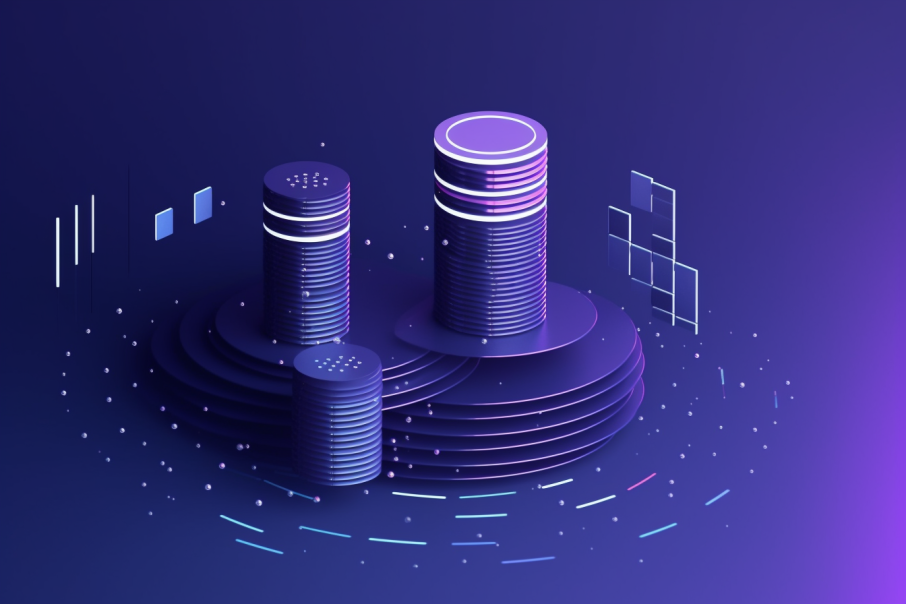
The Importance of Data Governance in Today’s Data-Driven World
In the digital transformation era, data has become the lifeblood of organizations, driving informed decision making, innovation, and efficiency. Nonetheless, data volume, variety, and velocity grow exponentially, and along with it, the importance of data governance. As a result, organizations need a robust data governance system to remain competitive.
Therefore, in this blog, I will explore the importance as well as various aspects of data governance, including strategy, framework, program, and tools that can help organizations effectively manage and protect their data assets.
Data Governance
1.1. Data Governance Strategy
A data governance strategy sets the foundation for an organization’s overall approach to managing data. It outlines the data governance program’s vision, goals, and objectives in addition to various stakeholders’ roles, responsibilities, and accountabilities. Thus, a well-defined strategy ensures alignment between data governance initiatives and the organization’s broader business objectives.
1.2. Data Governance Framework
The data governance framework is the blueprint for implementing the data governance strategy. It encompasses the policies, procedures, standards, and guidelines governing data handling across the organization. The framework should also address key aspects such as data quality, privacy, security, classification, and lifecycle management.
1.3. Data Governance Program
The data governance program operationalizes the strategy and framework. Thus, it ensures that the desired outcomes are achieved through initiatives, processes, and an effective governance office. A good data governance program has key components, such as:
- Data governance initiatives: Specific projects and activities aimed at improving data quality, ensuring data privacy and security, and enhancing data management capabilities.
- Data governance office: A centralized body overseeing and coordinating data governance activities, monitoring progress, and ensuring compliance with policies and standards.
- Data governance processes: Standardized procedures for data management tasks, such as data classification, data quality assessment, and data stewardship.
1.4. Data Governance Institute
The Data Governance Institute is an organization that provides guidance, best practices, and resources for organizations seeking to develop or improve their data governance programs. They offer frameworks, tools, and research that can help organizations design and implement effective data governance strategies.
Data Management
2.1. Data Quality
Ensuring data quality is a critical aspect of data governance. This involves implementing processes to measure and improve data accuracy, consistency, completeness, and timeliness. Accurate and reliable data is essential for informed decision-making and effective data analysis.
2.2. Data Assets
Data assets are valuable information that an organization collects, stores, and manages. Identifying, classifying, and documenting these assets helps organizations understand their data landscape and prioritize their data governance efforts.
2.3. Master Data Management
Master Data Management (MDM) is a subset of data governance that focuses on creating and maintaining a consistent, accurate view of an organization’s critical data entities, such as customers, products, or suppliers. MDM involves metadata management, documenting and organizing data attributes, relationships, and definitions.
2.4. Data Security
Data security is a crucial component of data governance that protects sensitive data from unauthorized access, use, or disclosure. Organizations can leverage it to safeguard their data assets by implementing robust access controls, data encryption, and data anonymization techniques.
Data Governance Team
3.1. Data Stewards
Data stewards are individuals responsible for managing and maintaining the quality and integrity of an organization’s data assets. They play a critical role in data governance by implementing data stewardship practices, such as data cleansing, validation, and enrichment.
3.2. Data Owners
Data owners are individuals or teams responsible for the data’s accuracy, quality, and security within their domain. Because they define data policies, ensure data quality, and grant access to data assets, they play a vital role in data governance.
Data Governance Tools
4.1. Data Governance Software
Data governance software is a suite of tools designed to help organizations automate, manage, and monitor their data governance processes. These tools can assist in various aspects of data governance, such as data cataloging, data lineage tracking, data quality management, and policy enforcement. Organizations can improve efficiency, enhance collaboration, and ensure compliance with data policies and regulations by leveraging data governance software. Check out Alation for a great Data Governance tool!
4.2. Data Governance Best Practices
Implementing best practices in data governance can help organizations optimize their programs and achieve better results. Some of these best practices include:
- Establishing clear roles and responsibilities: Clearly define the roles of data stewards, data owners, and other stakeholders involved in data governance to ensure accountability and effective collaboration.
- Prioritizing data quality: Invest in processes and tools that enhance data quality, as high-quality data is essential for accurate decision-making and analytics.
- Aligning with organizational objectives: Ensure that data governance efforts are aligned with the organization’s broader goals to maximize value and support business growth.
- Continuously monitoring and improving: Regularly assess the effectiveness of your data governance program and adjust strategies and processes based on feedback and changing business needs.
Data Governance FAQs
Below are ten frequently asked questions (FAQs) related to data governance:
What is data governance?
Data governance is a set of processes, policies, and standards that ensure the proper management, quality, security, and use of an organization’s data assets. It involves the establishment of roles, responsibilities, as well as accountabilities for the stakeholders involved in handling data.
Why is data governance important?
Data governance is essential for ensuring data quality, security, and regulation compliance. It helps organizations maintain their data’s accuracy, consistency, and reliability, leading to better decision-making, improved analytics, and increased operational efficiency.
How does data governance differ from data management?
Data governance is a subset of data management focusing on the policies, processes, and standards for managing data assets. However, data management encompasses a broader range of activities, including data storage, integration, processing, and analytics.
What are the key components of a data governance program?
A data governance program typically includes a strategy, framework, initiatives, processes, and an office responsible for overseeing and coordinating data governance activities.
Who is responsible for data governance in an organization?
Responsibility for data governance is typically shared among various stakeholders, including data owners, data stewards, data governance teams, and executive sponsors. Each stakeholder plays a specific role in the data governance process and ensures the proper handling of data assets.
How can organizations measure the success of their data governance program?
Organizations can measure the success of their data governance program by evaluating metrics related to data quality, data security, data usage, and compliance with policies and regulations.
What are some common data governance challenges?
Common data governance challenges include aligning data governance with organizational objectives, ensuring stakeholder buy-in, overcoming data silos, managing data quality and security, and keeping up with evolving data regulations.
How can organizations overcome data governance challenges?
There are a few ways in which organizations can overcome data governance challenges, for example, establishing clear roles and responsibilities, investing in data governance tools and software, implementing best practices, and continuously monitoring and improving their data governance processes.
What are some popular data governance tools?
Popular data governance tools include data cataloging tools, data lineage tracking tools, data quality management tools, and policy enforcement tools. These tools help automate and streamline data governance processes. Thus, they make it easier for organizations to manage and protect their data assets.
What is the role of data stewards in data governance?
Data stewards are responsible for managing and maintaining the quality and integrity of an organization’s data assets. They implement data stewardship practices such as data cleansing, validation, and enrichment. As a result, they ensure that data policies and standards are followed.
Conclusion
The importance of data governance is undeniable. It’s critical to managing and protecting an organization’s valuable data assets.
Organizations can ensure data quality, security, and compliance by implementing a comprehensive data governance strategy, framework, and program and leveraging the right tools and best practices. Because of that, in today’s data-driven world, a robust data governance system can be the key to unlocking the true potential of data and driving organizational success.

